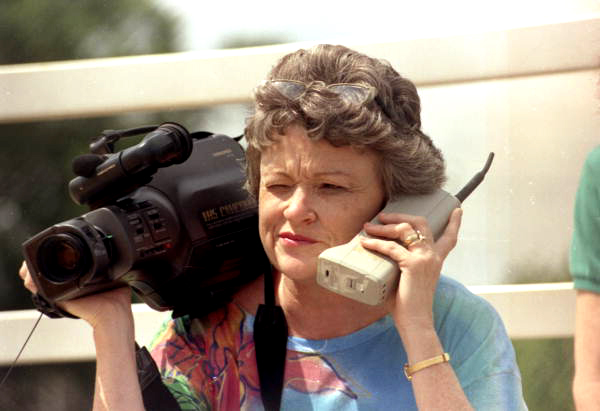 | |
| Photo courtesy of Flickr Commons |
When studying the greats I am always amazed at the insightful and critical points of view they had. However, it is clear that in most cases there is a strong divide between those with great technical skill -the practitioners, and those with critical abilities -scholars and critics. These two categories are very common in many fields, and it makes sense. I mean, do you think these innovative filmmakers had the time and ability to make those amazing tripod legs and write a critical essay on their work?
It is a long established idea that theory and praxis are two different and separate things. However, at a k-12 level these two approaches to knowledge are often brought together in other subjects. For example, 8th graders might study the different formulas, theories, etc in physics and then work on building a project or simple machine invention that integrates this theoretical knowledge. From Kindergarten on up students are taught not only how to read and critically engage with text, but also how to write in a variety of genres including essay, poetry, persuasive, and research writing.
So, what about media arts? (that is the technical name of my major by the way). Students are exposed to immense amounts of media every day outside of school, and though some get the opportunity to learn how to critically engage with it, few are trained/taught in how to create it. "Yes, but we aren't raising a whole new generation of Spielbergs!" The critic might say. It is true, but just as we recognize the incredible value writing brings to a young person (we aren't raising a generation of Twain's either), it is time we fully acknowledge the importance of learning practical skills of film/media making for the next generation of students.
 |
| Check out that phone! Photo Courtesy of Flickr Commons |
The devices that are inundating our world are inevitably overwhelming, helping, scaring, supporting, and changing the way we operate as families, schools, and a society in general. Rather than leave it to kids to deal with or figure out, we should begin teaching them how to create and craft meaningful media. We can and must also help them learn to critically engage and consume media.
Just like English class where students learn to write their own arguments and creative narratives, as well as read, we should support students creating their own media as well as critically reading media texts. It is pretty clear where I stand in response to one of the great debates in Hobbs' 1998 foundational article.
Should media production be an essential feature of media literacy education? Some educators believe that young people cannot become truly critical consumers of the mass media until they have had experience making photographs, planning and organizing ideas through storyboards, writing scripts and performing in front of a camera, designing their own web pages, or reporting a news story.
 |
| Renee Hobbs, University of Rhode Island |
This semester I participated in BYU's Hands On A Camera Project where a few BYU film students worked with High Schoolers as they created their own documentaries. Not everything went peachy in this experience but I did learned that praxis and theory can and should come together in k-12 classrooms. However, I also learned that doing so is extremely challenging. Issues such as motivation, equipment management, and time, and many other things (I need to write about) all contributed to my questioning of how critical media literacy might be more than just theoretical ponderings.
What do you think? Is there a place for production in our k-12 schools? (Another of Hobbs' debates) What benefits or challenges to you see regarding bringing praxis and theory together?

Greg, very academic argument! You pose a great argument that I think many of your readers and those literate in the digital will agree on. As an English teacher, I see tremendous value in arming students with the skills to read, write, and perform digital literacies such as creating a blog like this one or deconstructing the layers of product placement advertising. In fact, I would even go so far as to say that it's a disservice to students to force students to write a research paper in place of arguing through documentary - a far greater tool for rhetoric.
ReplyDelete